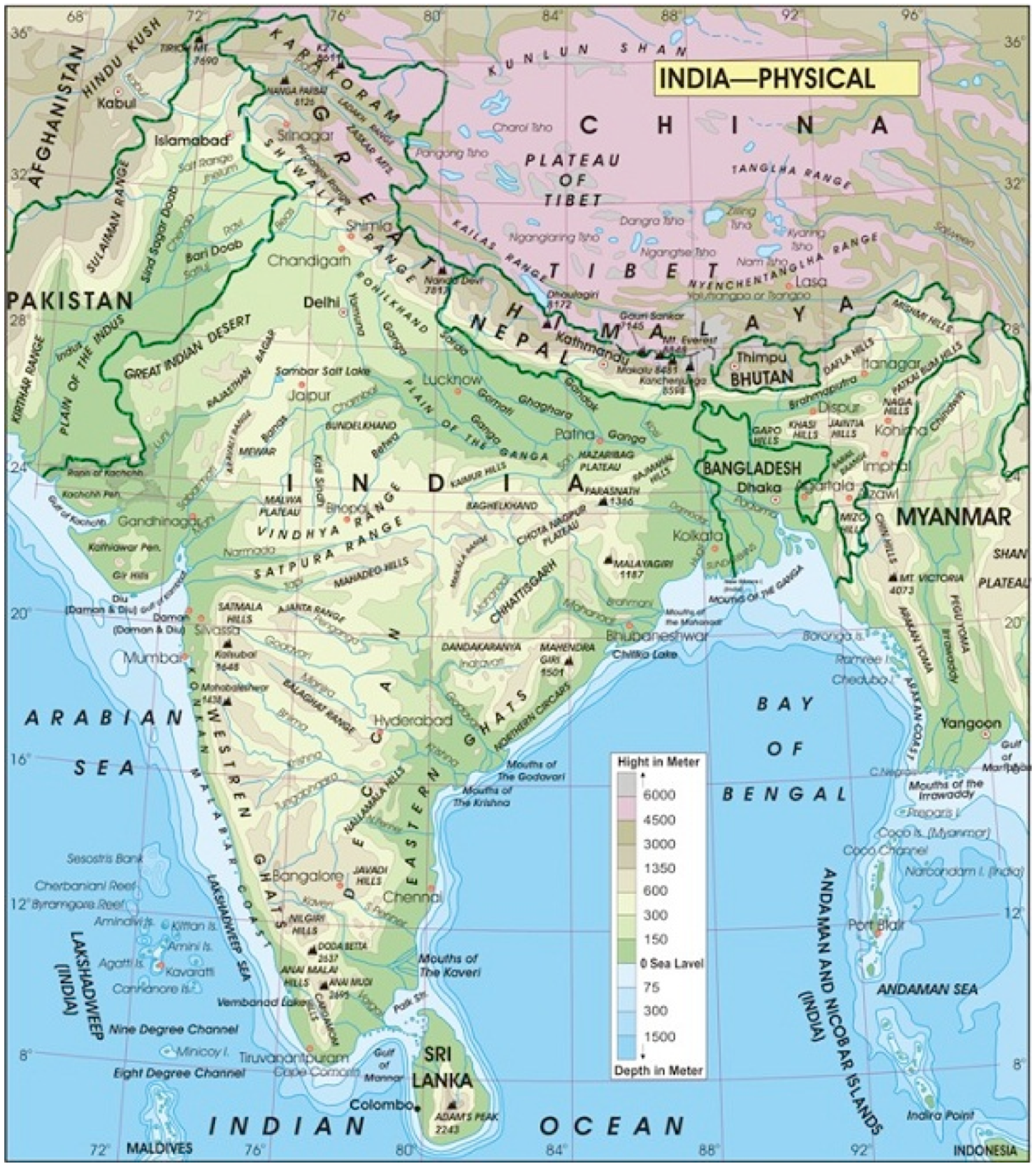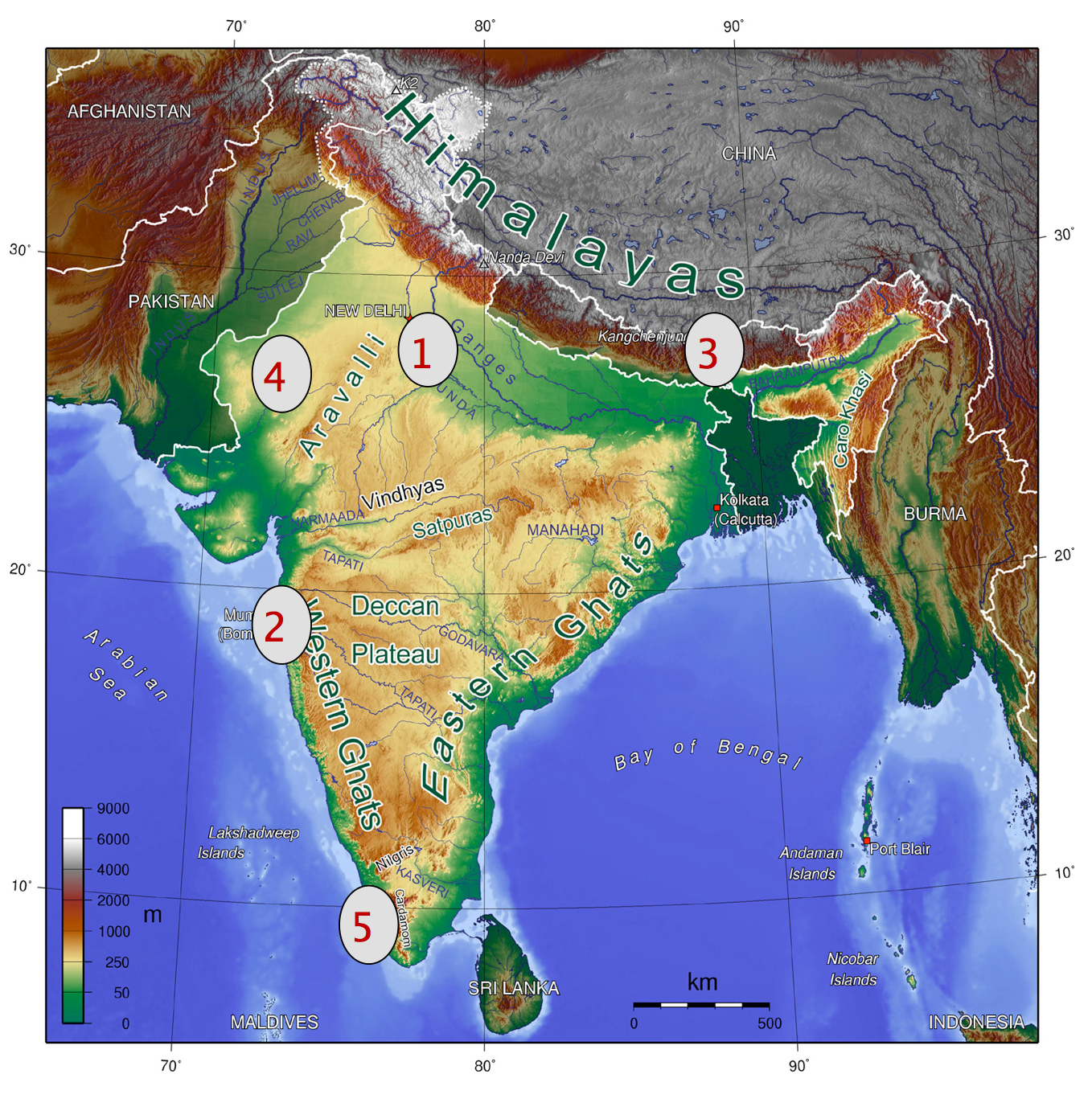Seasons in India
Monsoon in Mumbai
Flag of India
Winter: Takes place from December to early April. In the flat regions of northern India, a blanket of fog usually covers the ground in the morning hours of the day. Temperatures range from 3–15 °C but don’t go below 0 °C. Therefore, snow will not fall in these regions. However, the Himalayan Mountain range running along the Northern boundary of India experiences much colder weather and snowfall. In southern India, temperatures average around 20–25 °C.
Summer: Takes place from April to June. Temperatures average around 32–40 °C. It is hot and dry with very little rainfall which can sometimes cause droughts.
Monsoon: Also called the rainy season lasts from June to September. Southern India receives the most amount of rainfall, where sometimes it continuously rains for 2-3 days. The rain makes the air very humid but will cause temperatures to decrease which gives some respite from the heat. The excessive rain might sometimes cause flooding in the coastal regions of southern India.
Post-monsoon: This lasts from October to December. In northern India, October and November are usually cloudless and temperatures are very mild. Southern India still experiences warmer temperatures.





This is the Taj Mahal, located in Agra. It was built in 1653 by Mughal Emperor Shah Jahan in the memory of his wife, Mumtaz Mahal. It is one of the wonders of the world and is universally admired as a masterpiece of the world’s heritage.
This is a view of the Marine Drive in Mumbai. Mumbai is the most populous city in India, and the fourth most populous city in the world, with a population of approximately 20.5 million. It is also the home of Bollywood, India’s movie industry.
This is the Kangchenjunga. It is the highest mountain peak in India and the third highest in the world. Located in the state of Sikkim, it is 8,586 m high and is part of the great Himalayan mountain range.
Peacock is the national bird of India
This is a houseboat in Kerala, south India. These slow moving, exotic boats are a big tourist attraction. They are used to take leisure trips in the backwaters of Kerala.
A cricket match in progress
This is the Thar Desert. It is located in the state of Rajasthan in north-western India. It has an area of more than 200,000 square kilometres. Desert safaris on camels are very popular in these regions.
Did you know?
- The capital city of India is New Delhi.
- India is about 1/3 the size of the United States, yet it is the second most populous country in the world, with a population of approximately 1.2 billion. India is the seventh largest country in the world, at 1.27 million square miles.
- Hindi and English are the official languages of India. The government also recognizes 17 other languages (Assamese, Bengali, Gujarati, Nepali, Manipuri, Konkani, Kannada, Kashmiri, Malayalam, Marathi, Oriya, Punjabi, Sanskrit, Sindhi, Tamil, Telugu, and Urdu). Apart from these languages, about 1,652 dialects are spoken in the country.
- Every major world religion is represented in India. Additionally, Hinduism, Buddhism, Jainism, and Sikhism all originated in India.
- Cricket is India’s most popular sport. However, Field Hockey is considered the national sport.
- India is the world’s largest tea producer, and tea (chai) is its most popular beverage.
- India invented the number system. Zero was invented by the mathematician, Aryabhatta.
- India is the largest democracy in the world.
- The Bengal tiger is India’s national animal.
- The national fruit of India is the mango.
- The national bird of India is the peacock.
- The total distance covered by the 14,300 trains on the Indian Railways every day equals three and a half times the distance to moon.

